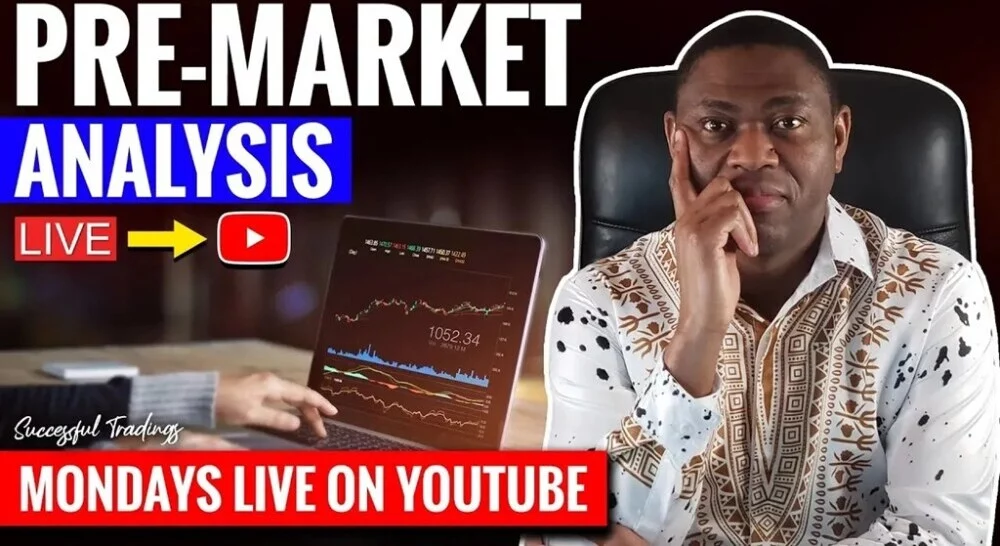I wake up early, caffeine in hand, and remind myself—pre‑market prep saves you from chaotic trades.
In this post, I walk through my step‑by‑step checklist so you feel confident and sharp before the opening bell.
Table of Contents
Why Pre-Market Prep Matters
I focus on gathering intel before the market opens because it shapes smart entries and avoids rookie mistakes. Early analysis helps me see momentum, catalysts, and potential pitfalls in advance. Instead of reacting mid‑day, I act with clarity and purpose, positioning myself strategically before others even pour coffee.
1. Scan Pre-Market Movers and Gappers
I start by checking stocks with large pre‑market moves. These gappers often signal upcoming volatility or momentum plays. While watching the screen, I filter for stocks that jumped or dropped significantly—sometimes more than 2–3 %.
I pay attention to whether moves follow news, earnings, or speculative hype.

2. Check Volume and Liquidity First
Even if a stock looks hot, I verify it trades with decent volume. Few shares mean choppy action and wild spreads.
I watch for stocks with enough pre‑market volume to avoid trading ghosts.
If volume is there, my setups become much more reliable.
3. Scan with Finviz — My Go-To Tool
Once I’ve identified potential plays, I jump into Finviz—hands down my favorite screener. It offers real‑time and pre‑market data, backtesting, alerts, and customizable filters. I tailor screens quickly and catch setups as they form.
NerdWallet+5Finviz+5Investopedia+5
Investopedia ranks Finviz top for swing traders due to its pre‑market data and filtering power. Educba+10Investopedia+10Reddit+10 Plus, the browser layout lets me hover over tickers for charts instantly—no clicking required.
4. Review News and Catalysts
After screening, I dig into news. Was there an earnings beat? An upgrade? A regulatory update? If so, I study the headlines myself—not just glance at them. This helps me separate valid setups from noise.
5. Map Support and Resistance
Next, I pull up charts and locate key support and resistance levels from yesterday’s close. I mark them before the open, labeling zones where price might stall or launch. This step gives me targets and stop areas before volatility hits.

Here’s an illustrative chart showing a classic resistance level that formed pre‑market.
6. Define Entry and Exit Strategy
I avoid guesswork by planning entries, exit points, and stop‑loss levels ahead of time. If the stock gaps above resistance, I know my trigger. If it fails resistance, I plan accordingly. I write this out on my notepad—then execute with minimal hesitation.
7. Watch Sector & Peer Movement
I always glance at related tickers too. If #HOOD is running, maybe #SQ or #PYPL follow. Sometimes a mover doesn’t stand alone—it influences its sector. That broader view helps me craft better setups and spot hidden trades.
8. Set Alerts and Notifications
Finviz Elite lets me set alerts. I funnel entries and price levels there so I don’t miss moves. Alerts help me stay disciplined, reacting when trades develop—not chasing them.
9. Manage Risk and Position Size
Pre‑market moves can burn accounts fast. I size trades conservatively—smaller shares, tight stops, lower leverage. That protects capital while giving me room to learn without catastrophic mistakes.
10. Monitor Opening Range
As the bell nears, I monitor the first few candles. That tells me whether momentum holds or fades. If the gap sticks with volume, I ride if my plan aligns. If it reverses, I stay out or take quick loss.
Recommended Video: “Finding Morning Gap Stocks with Finviz”
Check out this video from your YouTube channel for a killer walkthrough of identifying pre‑market gaps using Finviz:
It aligns perfectly with today’s checklist and shows exactly how to screen on your platform.
Frequently Asked Questions (FAQs)
Q1: Can I use the free version of Finviz for pre-market setups?
Yes, the free version gives delayed pre‑market data and solid screening. It works well. For real-time alerts and faster scanning, Finviz Elite makes life easier.
Q2: How much pre-market volume is enough?
I look for at least 10–15 % of normal daily volume before considering a trade. That suggests real investor interest.
Q3: Should novices trade pre-market actively?
I caution patience. Pre-market is unpredictable and thin. Use it to plan setups, then trade once markets open and cycles stabilize.
Q4: What’s a simple pre-market screener filter?
Use Finviz filters: gappers (>4 %), volume > 10 %, relative volume > 1.5, news catalysts. That filters out noise and highlights actionable setups.
Conclusion
I hope this checklist gives you direction instead of overwhelm. When I follow these steps, I stay calm, focused, and strategic before the rush. First I screen movers, then check volume, dive into Finviz, spot catalysts, tag levels, plan entries, and manage risk. Finally I ride the open—or step back.
Pre-market prepping sets you up to trade with clarity and control. You avoid surprises, and instead move with conviction.
Go make your setups clean, your trades smarter, and your mornings more productive.
You’re already ahead because you’re planning to prep. Keep that momentum and keep learning.

Hold a Master Degree in Electrical engineering from Texas A&M University.
African born – French Raised and US matured who speak 5 languages.
Active Stock Options Trader and Coach since 2014.
Most Swing Trade weekly Options and Specialize in 10-Baggers !
YouTube Channel: https://www.youtube.com/c/SuccessfulTradings
Other Website: https://237answersblog.com/
